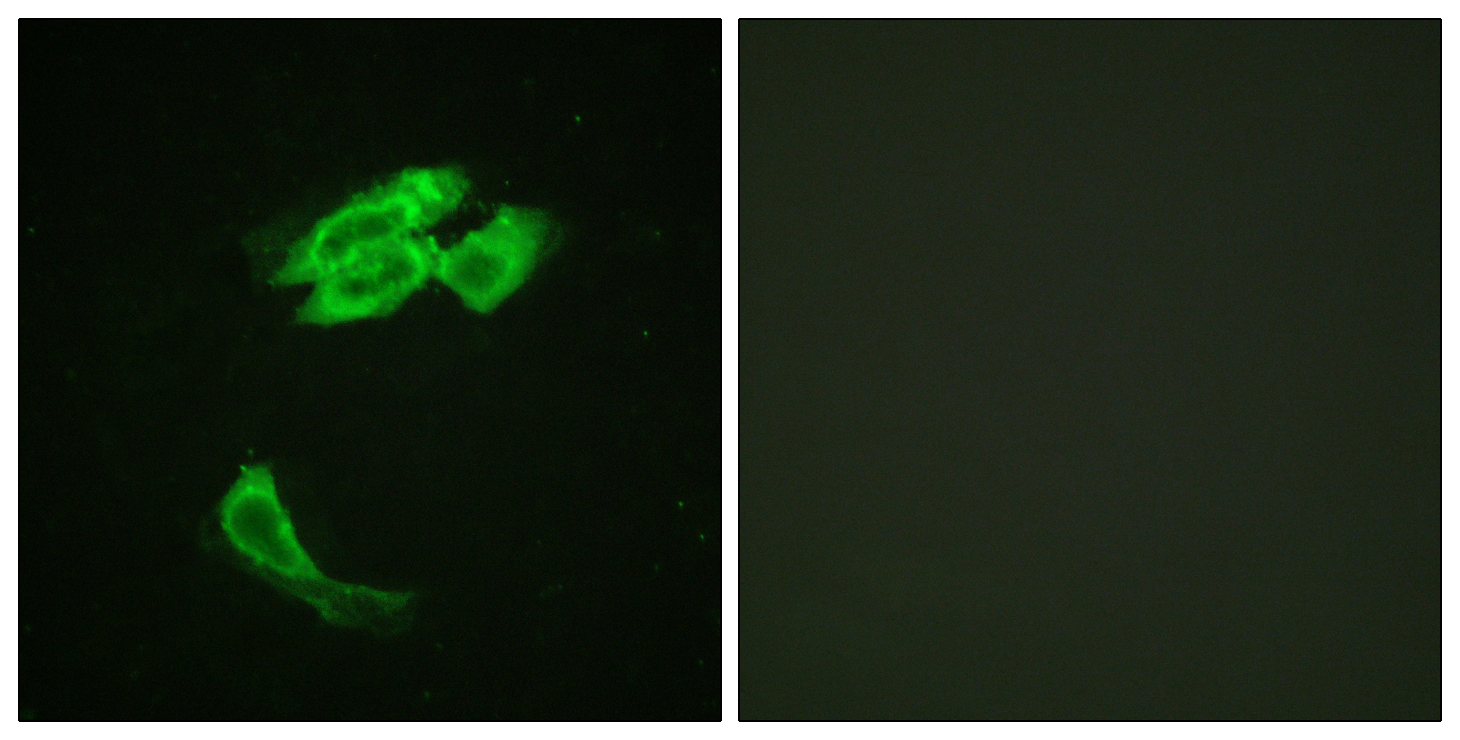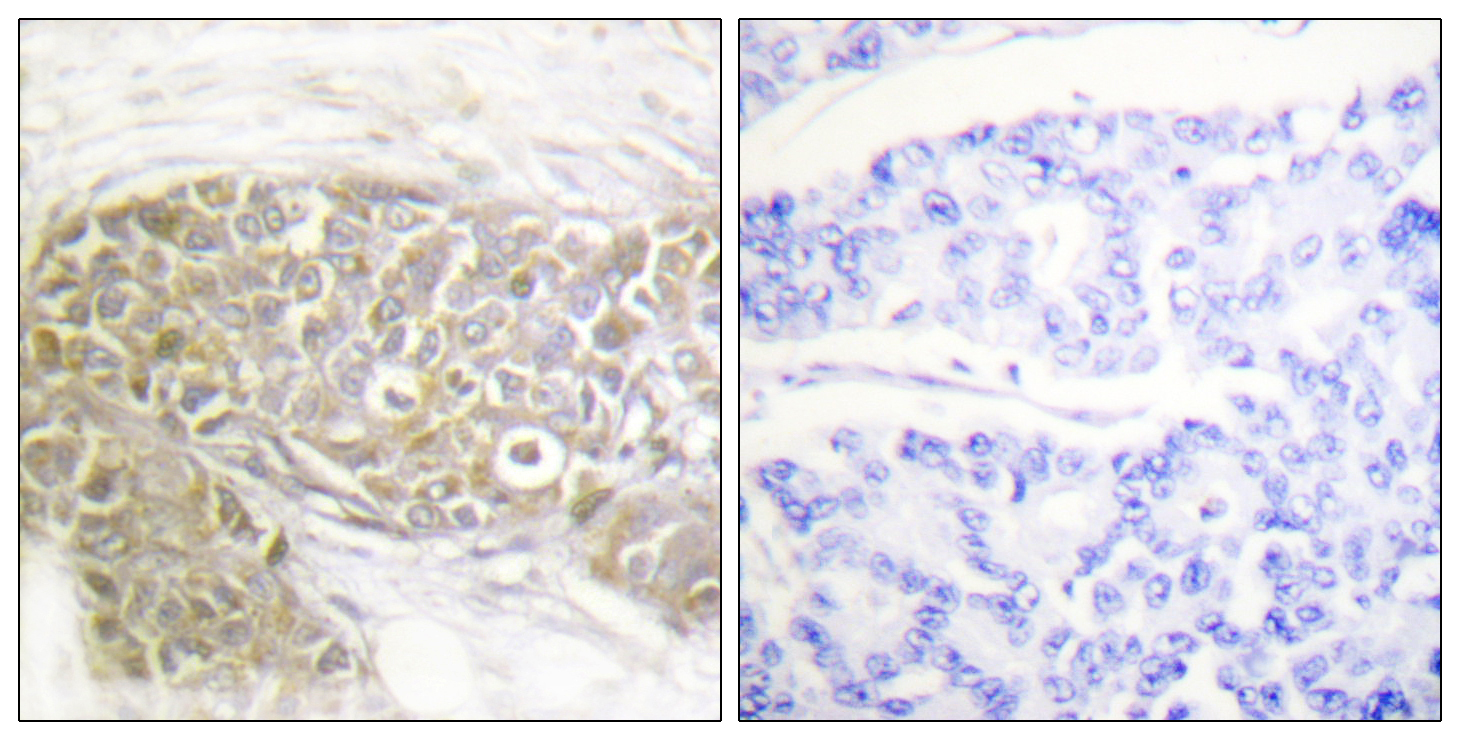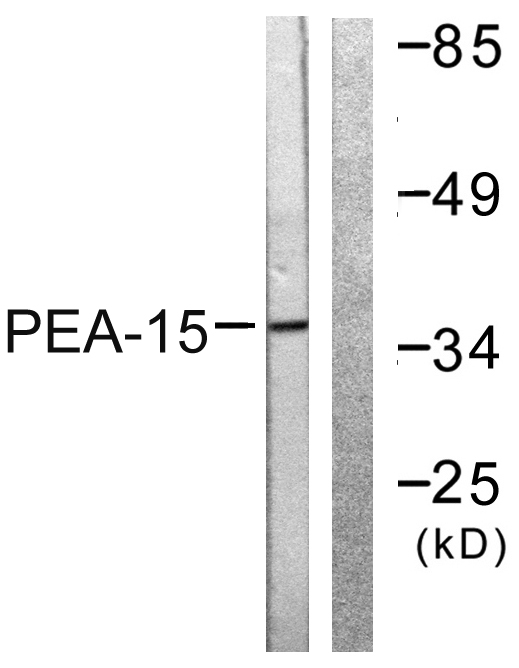产品名称
PEA-15 Rabbit Polyclonal Antibody
别名
PEA15; Astrocytic phosphoprotein PEA-15; 15 kDa phosphoprotein enriched in astrocytes; Phosphoprotein enriched in diabetes; PED
蛋白名称
Astrocytic phosphoprotein PEA-15
反应种属
Human,Mouse,Rat,Monkey
存储缓冲液
Liquid in PBS containing 50% glycerol, 0.5% BSA and 0.02% New type preservative N.
Human Gene Link
http://www.ncbi.nlm.nih.gov/sites/entrez?db=gene&term=8682
Human Swissprot No.
Q15121
Human Swissprot Link
http://www.uniprot.org/uniprotkb/Q15121/entry
Mouse Gene Link
http://www.ncbi.nlm.nih.gov/sites/entrez?db=gene&term=18611
Mouse Swissprot No.
Q62048
Mouse Swissprot Link
http://www.uniprot.org/uniprot/Q62048
Rat Gene Link
http://www.ncbi.nlm.nih.gov/sites/entrez?db=gene&term=364052
Rat Swissprot Link
http://www.uniprot.org/uniprot/Q5U318
免疫原
The antiserum was produced against synthesized peptide derived from human PEA-15. AA range:81-130
特异性
PEA-15 Polyclonal Antibody detects endogenous levels of PEA-15 protein.
稀释度
WB 1:500 - 1:2000. IHC 1:100 - 1:300. IF 1:200 - 1:1000. ELISA: 1:40000. Not yet tested in other applications.
宿主
Polyclonal, Rabbit,IgG
背景介绍
phosphoprotein enriched in astrocytes 15(PEA15) Homo sapiens This gene encodes a death effector domain-containing protein that functions as a negative regulator of apoptosis. The encoded protein is an endogenous substrate for protein kinase C. This protein is also overexpressed in type 2 diabetes mellitus, where it may contribute to insulin resistance in glucose uptake. Alternative splicing results in multiple transcript variants. [provided by RefSeq, Jul 2014],
组织表达
Ubiquitously expressed. Most abundant in tissues such as heart, brain, muscle and adipose tissue which utilize glucose as an energy source. Lower expression in glucose-producing tissues. Higher levels of expression are found in tissues from individuals with type 2 diabetes than in controls.
细胞定位
Cytoplasm. Associated with microtubules.
功能
function:Blocks Ras-mediated inhibition of integrin activation and modulates the ERK MAP kinase cascade. Inhibits RPS6KA3 activities by retaining it in the cytoplasm (By similarity). Inhibits both TNFRSF6- and TNFRSF1A-mediated CASP8 activity and apoptosis. Regulates glucose transport by controlling both the content of SLC2A1 glucose transporters on the plasma membrane and the insulin-dependent trafficking of SLC2A4 from the cell interior to the surface.,PTM:Phosphorylated by protein kinase C and calcium-calmodulin-dependent protein kinase. These phosphorylation events are modulated by neurotransmitters or hormones.,similarity:Contains 1 DED (death effector) domain.,subcellular location:Associated with microtubules.,subunit:Binds RPS6KA3, MAPK3 and MAPK1. Transient interaction with PLD1 and PLD2 (By similarity). Interacts with CASP8 and FADD.,tissue specificity:Ubiquitously expressed. Most abundant in tissues such as heart, brain, muscle and adipose tissue which utilize glucose as an energy source. Lower expression in glucose-producing tissues. Higher levels of expression are found in tissues from individuals with type 2 diabetes than in controls.,
纯化
The antibody was affinity-purified from rabbit antiserum by affinity-chromatography using epitope-specific immunogen.



